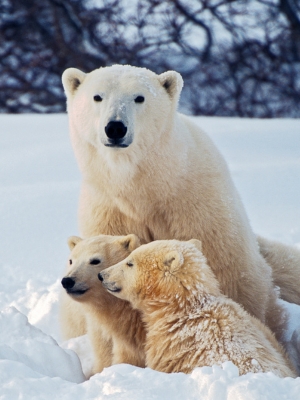In the world of wildlife conservation, it can often feel like the news is all “doom and gloom,” with little hope for the future. But some animal species have demonstrated impressive adaptation and resilience in the face of ongoing challenges. The top causes of population decline in animals include human-driven habitat destruction, resource depletion, and climate change.
Animals may adapt to a rapidly changing world in various ways, including adjusting their behavior, modifying their environment, and undergoing physical changes. The following animals’ success shows that they will not go down without a fight, even with the looming threat of extinction.
Changing Behavior and Environment
Animals may change their locations, activity levels, diet, and the way they reproduce as global temperatures increase. For example, California sea lions have moved further away from the coast and added new food to their diet to help fend off starvation. California sea lions have also travelled further than ever – sometimes making the 2,100-mile journey all the way to Alaska.
Pink-footed geese in the Arctic have developed new migration routes and breeding grounds, with warming temperatures leading to the discovery of new habitats. Some migrating birds elsewhere in the world are laying their eggs earlier to match insect availability so their young will have food.
A 2011 study found that species are moving to higher elevations and higher latitudes in response to warming temperatures, though individual species vary in their rates of movement.
Changing Bodies
Animals may adapt physically over time in response to climate change, including the size of their limbs, ears, or beaks, to help them cope with rising temperatures. Larger appendages and smaller bodies are typically the most successful physical adaptations in warmer temperatures.
For example, in the dry grasslands of South Africa, scientists found that the average foot length of Cape ground squirrels had grown by 9% in just 18 years. Feet play a crucial role in body temperature regulation; a larger foot surface area means heat can leave the body quicker.
The beaks of some Australian parrot species including gang-gang cockatoos and red-rumped parrots have grown by up to 10% since 1871 for the same reason.
Marine iguanas in the Galápagos can shrink and grow their body length by as much as 20% as temperatures fluctuate and the amount of food available changes. Marine iguanas are the only lizards known to forage for food in the ocean and live off the algae growing there. Warmer water makes the red and green algae that marine iguanas prefer less available. To combat their lack of food, marine iguanas shrink; individuals can become as much as 20% shorter. These lizards can shrink and grow multiple times throughout their lives depending on the climate.
The color of animals is also changing. Dark-colored dragonflies are getting paler to reduce the amount of heat they absorb from the sun. In Finland, tawny owls are either russet or pale gray, with the lighter gray color providing camouflage against snow. But as snow cover has decreased in Finland, russet owls grew from about 12% of the population in the early 1960s to 40% in 2010.
Animal Adaptations Are Not a Solution to Climate Change
While these changes are beneficial in the short-term, scientists say they will not solve the problem completely as we cannot avoid the main issues caused by climate change like fewer resources and more competition. Climate change is also occurring at a rate that may be too fast for the animals to keep up. Since record keeping began in 1850, ten of the warmest years have all been within the last decade. Animals adapting will only protect them for so long, but not forever.
Many of these adaptations may also come at a cost to the animals; for example, changes in appendage size may make feeding or hunting more difficult, or changes in color may make animals more visible and easier for predators to hunt. Animal species that evolved in the most extreme environments on Earth, like the arctic caribou, fox, and snowy owl, will not have anywhere else to go if the temperatures continue to rise.
It is our responsibility to help bridge the expanding gap between human use of land and resources and the survivability of the animals who call these environments home. By doing this, we can help delay the permanence of extinction as long as we can.
Keep Wildlife in the Wild,
Devan
Dear Reader,
We are a nonprofit committed to wildlife conservation, welfare, and rescue. Making resources free and widely distributed, like our news items, is an important part of our mission. If you found this article helpful, enjoyable, or enlightening, please donate to help keep these resources available, and Keep Wildlife In The Wild.
Thank You,
The Born Free USA Team

 Dear Reader,
Dear Reader,